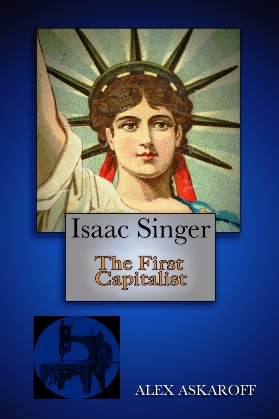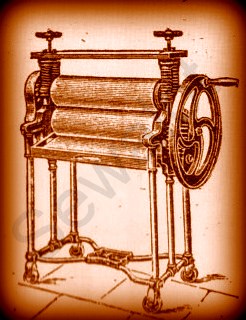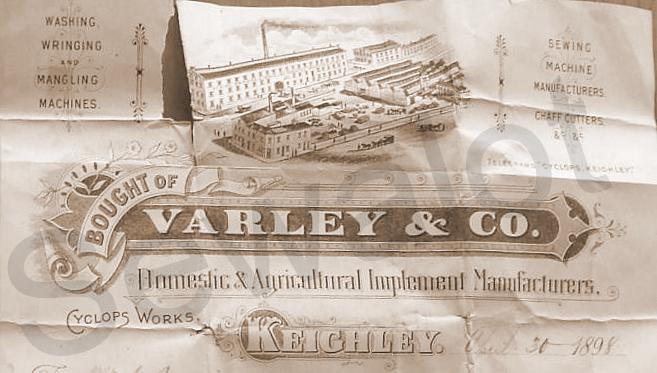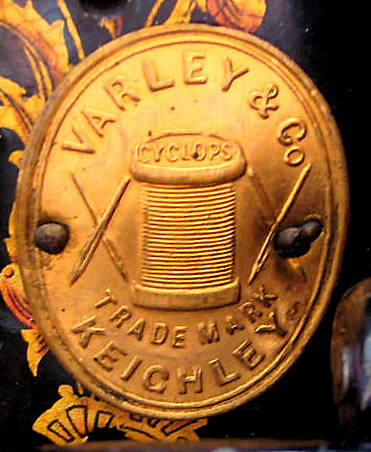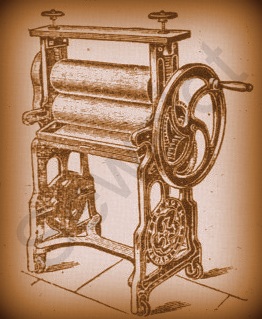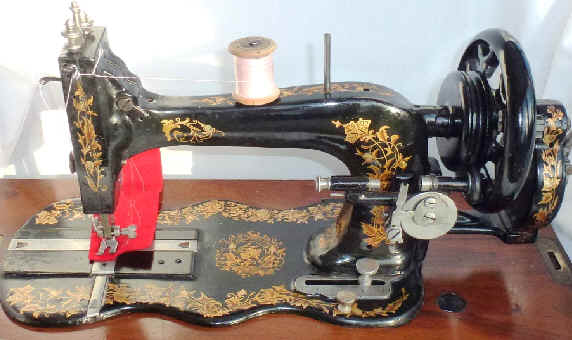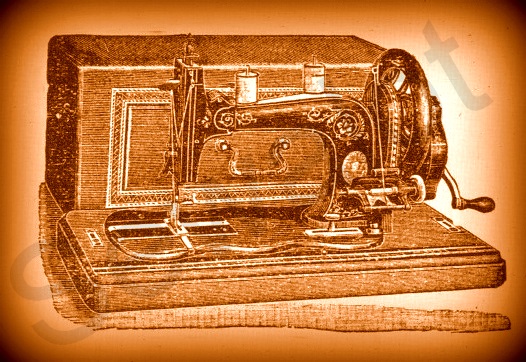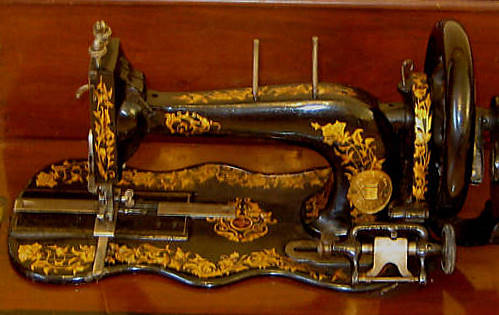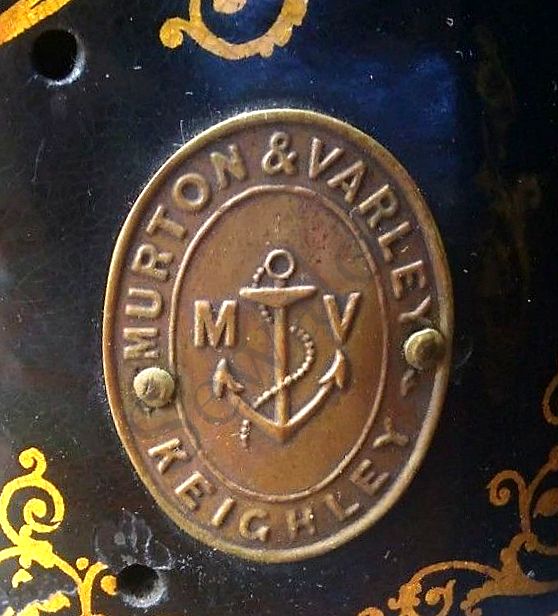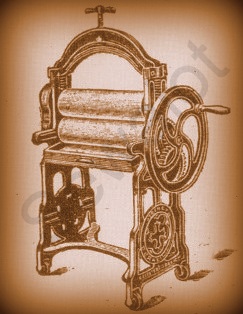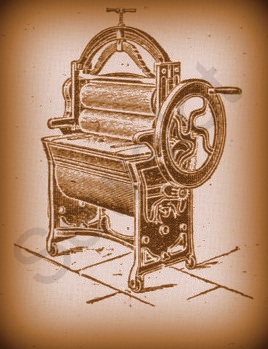|
|||||||||||||||||||||
|
|
Most of us know the name Singer but few are aware of his amazing life story, his rags to riches journey from a little runaway to one of the richest men of his age. The story of Isaac Merritt Singer will blow your mind, his wives and lovers his castles and palaces all built on the back of one of the greatest inventions of the 19th century. For the first time the most complete story of a forgotten giant is brought to you by Alex Askaroff
The Celebrated Washing Machines & Wringers
Varley & Co manufactured and imported sewing machines from 1876 right up until the Great War, completely ceasing production around 1918. Originally, the company was Varley & Wolfenden and were base in Keighley, Yorkshire.
Cyclops Works
1898
Made from the
best materials Their limited production and hand made sewing machines makes Varley sewing machines extremely rare today. As well as sewing machines they made washing, wringing, mangling and farmers chaffing machines in their Cyclops Works. The British company was based in Keighley, Yorkshire.
Their emblem was the Cyclops, a mythical Greek giant with one all-seeing eye that Odysseus encountered on his epic journey. The one eye could relate to the single eye of the needle. Richard Varley was born in 1845 and by the time he reached the age of 30 he was a skilled engineer looking for something new. Sewing and washing machines were expanding into every home in the country and it was the perfect market for him to get into, but he needed financing.
The initial finance came from wealthy farmer, John Procter Wolfenden who had made his money in farming, meat and wool. The two men built a purpose-made factory in Greengate, Keighley, complete with foundry and forge. Here they built their first sewing machines.
Varley & Co The British Varley-wolfenden Cyclops is extremely rare today especially in nice condition as below which was advertised as High Arm Family Machine circa 1890.
Varley & Wolfenden Their best selling Varley & Co sewing machine was the Cyclops model, based on the Singer model 12-13 New Family of 1865; popularly know as the Fiddlebase due to its fiddle shaped cast bed. Singer model 12. It was slightly smaller than the Singer 12 but had excellent teeth so fed the work through very well. An improved larger High Arm Cyclops was soon developed. They also made ornately carved cabinets and cast treadle assemblies. Several of the machines have turned up with the Royal coat of arms on the main bed of the sewing machine. This was often obtained by sending a product to a member of the Royal Family. Sometimes they were taken and used and often (as with Weir and Jones machines) letters were written back supporting their efforts and from then on the royal connection could be used to help sales abroad.Murton & Varley sewing machines Murton & Varley & Co By 1883 several partners had turned up in the Cyclops company. You can see here a Murton & Varley sewing machine badge which was on a very similar machine. Note the new trade mark. We may assume that there was some sort of financial connection. Varley and Wolfenden may have brought in other investors continued with other partners. Having the Murton name before Varley possibly meant he invested quite heavily in the business? It is a lot of guesswork but one day all the pieces of the jigsaw will make sense. There is also a badge with Moore, Murton & Varley. Was Varley having partner troubles? A common problem when investors don't get the return that they were expecting. They had expanded to America, gaining agents in Kentucky, but it was too little too late.
In 1896 the partnership between Varley and Wolfenden finally collapsed and the men went their separate ways. The company continued as Varley & Co. One of their main problems was that there washers and mangles were being supplied to the trade only, limiting there market. They tried to copy the popular Jones and Bradbury Cat Back sewing machine models but sales were failing. There is a huge similarity between the Varley Longford Family Sewing Machine and the Jones Family Sewing Machine, they could be twins! It is possible that they started buying parts or even complete sewing machines from Jones Sewing Machines in Manchester, or even Bradbury as their boxes and double cotton pegs look identical on several models. Either way buying in machines cuts the company profits dramatically. Maybe they started to concentrate on their easier to make washers and mangles and bought in complete machines to supply the growing list of agents?
American Agents In 1911 Varley & Co became a limited company and struggled on for a few more years until their final collapse in the summer of 1917. This could coincide with the loss of a skilled workforce as so many young men went of to fight. Had the company survived to post WW1 they may have found a much more eager market as German products were shunned and people sought out British made goods. Varley Cyclops sewing machines are rare and do not surface often. To my knowledge (don't bank on that) Varley & Wolfenden only made three distinct models (in various dresses) and only in limited numbers. This makes them considerably rarer than the British Jones, Bradbury and Singer models of the same period. At the moment they are underrated by collectors but that will soon change as we all seek out those elusive remaining models. As Varley & Wolfenden boasted "Our machines are made from the best materials and cannot be surpassed for excellence of finish and durability." If you come across any other models for Varley please do let me know and I'll add it to this page: alexsussex@aol.com Most of us know the name Singer but few are aware of his amazing life story, his rags to riches journey from a little runaway to one of the richest men of his age. The story of Isaac Merritt Singer will blow your mind, his wives and lovers his castles and palaces all built on the back of one of the greatest inventions of the 19th century. For the first time the most complete story of a forgotten giant is brought to you by Alex Askaroff News Flash! All Alex Askaroff's books are now available on Amazon in most countries around the world. 'This may be the best book I've ever read.' J. Vincent, Horam, UK. We all love stories don’t we, especially true ones. For over 30 years Alex Askaroff has been carefully collecting and sharing priceless tales from his corner of England. At last his long awaited next volume is finally here. In his eleventh published book he shows us once again that he is the master of the short story. We meet Little Sid, who earned his first medal cycling through The Blitz, before he was even old enough to go to war. We meet crazy farmers and mad dogs, great inventors and a host of wonderfully eccentric characters, from corrupt politicians, spies and naked gardeners to the Hastings schoolboy who fooled the world to become the most famous First Nation Indian alive. Alex Askaroff’s way with words, his funny and thought provoking stories, and the wonderful Sussex characters that he meets on his travels will leave you with a smile and a happy heart. Once again Alex has brought his unique magic to the page and captures England, its history and its people as only he can.
|
||||||||||||||||||||
|
|||||||||||||||||||||
